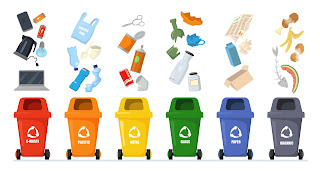Going Green: Steps to Make Your Brand More Environmentally Responsible
As businesses around the world continue to play a vital role in the planet's social, economic, and environmental ecosystems, sustainability is becoming a top priority for companies in all industries. This is especially true for brands that are looking to undertake a rebranding effort. In today's environmentally conscious world, the importance of adopting eco-friendly practices cannot be overstated, and businesses who take steps to make their branding more responsible are making a bigger impact than they may realize. Today, we’ll explore some of the essential processes that businesses can use to ensure their rebranding is as environmentally responsible as possible.
- Conduct a Sustainability Audit
Before making any changes to your branding, it's essential to conduct a sustainability audit. This can help identify areas in your current branding that are not environmentally responsible and help you take steps to improve them. This process involves the assessment of your brand's sustainability footprint, evaluating critical areas of waste generation and environmental impact. It is a vital step to determine the current state and identify the improvement opportunity. - Find Sustainable Suppliers
An often-overlooked aspect of branding is the sourcing of materials used in production. It is essential to scrutinize your suppliers and look for environmentally responsible suppliers. Collate a list to evaluate suppliers based on their sustainability practices, including sourcing eco-friendly materials, reducing their carbon footprint, and recycling or disposing of waste responsibly. - Use Eco-Friendly Materials
Once you know where your materials are coming from, it’s time to focus on the types of materials you are using. Consider using eco-friendly options like recycled paper, biodegradable plastics, or natural, organic fabrics instead of synthetic ones. Prioritize using sustainable materials that can be reused or recycled, create less waste, have less impact on the environment, and are completely harmless to the surroundings. - Develop Sustainable Packaging
Packaging plays a critical role in branding. Your business can reduce its carbon footprint by developing sustainable packaging solutions—for example, using biodegradable materials, minimizing packaging size, or utilizing recycled materials. It's important to ensure that your packaging can be recycled or reused easily after use. Creating innovative and sustainable packaging can help your brand stand out while also reducing your environmental impact. - Communicate Your Efforts
Finally, communicating your eco-friendly branding efforts is crucial to remain transparent with your audience. Update your website, social media handles, and marketing collaterals to highlight your efforts in reducing your environmental impact. Sharing your approach, progress, and initiatives can inspire other companies to join the sustainability effort while fostering an eco-friendly culture in and outside the organization.
Conclusion:
Sustainability is no longer just a trend; it's a way of life that businesses must adopt if they want to stay relevant in this environmentally conscious world. Environmental responsibility must be part of your brand's DNA and not an afterthought. These five processes discussed above can help prioritize sustainability in your rebranding efforts, mitigate your carbon footprint, and contribute towards a better planet. By taking steps to create a more eco-friendly branding strategy, you are not only empowering your brand to make a larger than life impact in the world but also providing an unquestionable advantage over competitors. Remember, it only takes one step to make a difference in the world, and the steps you take today can ensure a more sustainable tomorrow.



Comments
Post a Comment